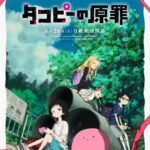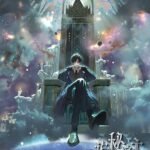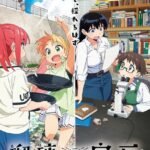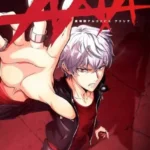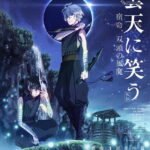Raiyantsuuri no Uta
ライヤンツーリーのうた / Song of Raiyantsuuri / Song of Liang Chu Li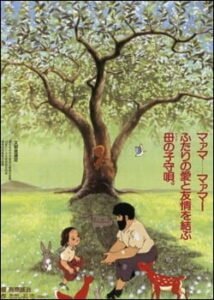
| Genres: Drama, Historical | |
| Themes: Historical | |
| Producers: Mushi Production | |
| Rating: 7.02 / 10 | |
| Rank: #4399 | |
| Popularity: #11909 | |
| Users Listed: 2,194 | |
| Users Scored: 397 | |
| NSFW: No | |
| Last Updated: 04/17/2022 | |
| Aired: July 21, 1994 (Summer) | |
| Type: movie | |
| Source: book | |
| Age Rating: G | |
| Episodes: 1 |
Synopsis:
Set against the backdrop of a war-torn Japan, this anime explores the isolation and consequences of survival. A Chinese laborer, forcibly relocated to work in Japanese coal mines during World War II, unexpectedly escapes his captivity. Seeking refuge in the remote countryside, he finds himself cut off from the world and unaware of the war’s conclusion. The series unfolds as a quiet examination of displacement and the human cost of conflict. As time passes, the protagonist's solitude becomes a poignant reflection on identity, belonging, and the enduring impact of historical events. The narrative emphasizes atmosphere and character introspection rather than action, offering a contemplative look at a forgotten chapter of history through a personal lens.
You May Also Like:
Characters:
- Kitabatake, Tomoko (Main) - Voice Actors: Takamori, Yoshino
- Wang, Yingren (Main) - Voice Actors: Horiuchi, Kenyuu
Staff:
- Arihara, Seiji (Director, Screenplay)
- Takamori, Yoshino (Theme Song Performance)
- Kataoka, Kouji (Key Animation)
- Koroku, Reijirou (Music)
- Nishida, Miyako (In-Between Animation)
- Ono, Takaya (Animation Director)
- Yagi, Motoki (Key Animation)
- Yamagata, Kouji (In-Between Animation)
- Yanagino, Tatsuo (Key Animation)
Reviews:
-
User Deago (Score: 9/10):
Raiyantsuuri no Uta is a war drama based on real events, recounting the life of an escaped forced labour prisoner of war, Inlen, a Chinese farmer who was forcefully taken to a coal mine in Hokkaido by the Japanese military during the Pacific War. Escaping just two weeks before Japan's defeat, after undergoing forced labour, he embarks on a challenging life as a fugitive, yearning to return to China, oblivious to the war's conclusion. The movie establishes itself with a hooking introduction, showing the escape from the labour prison and seamlessly transitioning into Inlen's life being on the run and struggling for survival in the harshand cold environment. With the goal of returning to China, where his wife, pregnant with his child before their separation, may still be living and waiting for his return, Inlen plants Raiyantsuuri, a Chinese pear symbolising their love. With unparalleled hope and determination, he makes a promise to himself to return home and see his family again.nnOn the other hand, Tomoko, a Japanese first-grade elementary student living at her relatives' house in Hokkaido, is unable to speak due to a shocking event she witnessed during the war. Often running away from home, feeling like an unwanted burden, Tomoko one day hears a Chinese lullaby in the nearby forest. The singer is Inlen. The unsual dynamic between these two homesick tragic souls who can only communicate with their emotions ensues.nnBeyond the suspenseful escape and survival, the movie offers profound and emotional elements, from war-induced PTSD to inhumane labour and the ache of separation from loved ones. Inlen and Tomoko, broken spirits finding solace through a shared lullaby, bridge the gap between their differences – she is mute, and he is Chinese – through sharing feelings rather than words. In the midst of fleeting, peaceful moments steeped in nostalgia and reminiscing about the irreversible past, the evolution of Inlen and Tomoko unfolds as their experiences shape them.nnIt touches upon the sins of the past through the innocent lens of a child, delivering a powerful message about the responsibility to prevent further pain and suffering, while also emphasising the importance of acknowledging and learning from the harsh and shameful aspects of history. It also subtly touches upon anti-nationalism, reminding us that despite wars and cultural differences, humans share basic needs, whether physical or emotional, fostering a universal connection.nnRaiyantsuuri no Uta may lack the captivating animation of higher-budget Ghibli films like Grave of the Fireflies; still, visually, it retains a calm charm that complements its mature and down-to-earth storytelling. It may not boast the grandeur of some war dramas, but it stands as a testament to the enduring human spirit, encapsulating a simple yet emotionally resonant story, distinguishing itself by presenting a surrogate parent-child chemistry between characters of seemingly different backgrounds, yet both complete and nurture each other, weaving a poignant and unique story.
